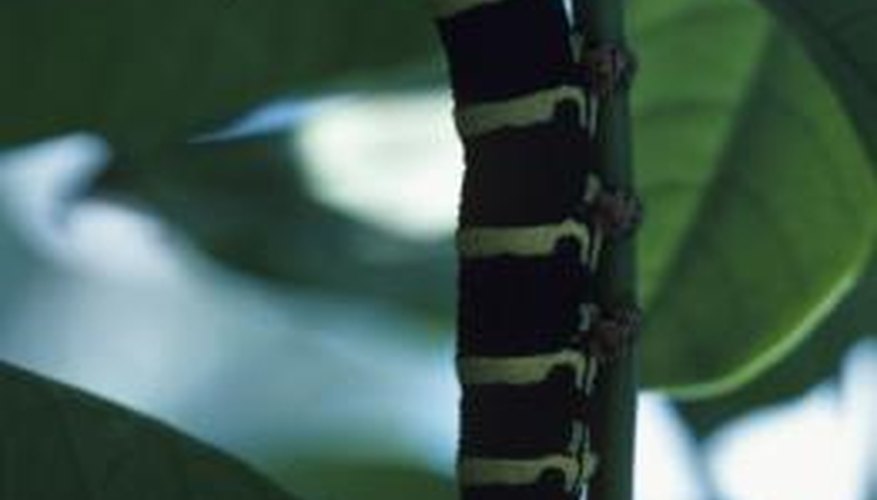The Spanish broom (Spartium junceum) plant is an evergreen shrub that may reach as tall as 10 feet. It is a native of the Mediterranean and thrives in warm areas where full sun exposure is available. Though generally hardy, the broom plant is susceptible to a number of pests, and some are noticeable due to their black colour. When left unchecked, pests may become a serious, potentially lethal, problem.
Aphids
Aphids are among the most widespread pests in the gardening world. They are known for attacking most plant species, including the Spanish broom, and may be found in just about every growing zone. They are soft-bodied insects that may be yellow, green, red or black. In small numbers, they are relatively harmless, but as populations grow, foliage becomes damaged and often dies. To prevent populations from getting out of control, you can simply introduce lady birds or lacewings to the environment. Additionally, insecticidal soaps or neem oil work to get rid of large populations.
- Aphids are among the most widespread pests in the gardening world.
- To prevent populations from getting out of control, you can simply introduce lady birds or lacewings to the environment.
Scale
There are several hundred species of scale, only a few of which are problematic for the Spanish broom. Among the most damaging is the cottony cushion, Icerya purchasi. Cottony cushion is particularly prevalent on ornamental plants and it may be orange, yellow, dark brown or black. It is notable for the cottony egg sac the insect carries on its back, which may be two or three times the length of the body. As with other scale species, these will feed on sap inside the foliage, leaving behind large amounts of dead leaves. The insects excrete a soot-like mould that will cover leaves and other affected areas. Insecticide and horticultural oil are the most effective treatments for scale.
- There are several hundred species of scale, only a few of which are problematic for the Spanish broom.
- As with other scale species, these will feed on sap inside the foliage, leaving behind large amounts of dead leaves.
Borers
Boring insects are among the most destructive in the plant world and are particularly harmful to plants already under stress. Growers should be especially careful with Spanish brooms that have been recently transplanted, are experiencing drought or if soil conditions are less than ideal, as these will make it easier to fall victim to boring insects. The twig-boring moth (Leucoptera spartifoliela) is especially troublesome and has been used to naturally control the spread of Scotch broom, a close relative of the Spanish broom. Females of the species will lay eggs in the bark of stems and twigs, where larvae will hatch and tunnel into the plant. Girdling of twigs and branches is often the result, an effect that is irreversible and potentially fatal. Maintaining overall health and removing damaged pieces is essential to preventing borer infestations.
- Boring insects are among the most destructive in the plant world and are particularly harmful to plants already under stress.
- Growers should be especially careful with Spanish brooms that have been recently transplanted, are experiencing drought or if soil conditions are less than ideal, as these will make it easier to fall victim to boring insects.
Other Pests
The hoplia beetle is closely related to the Japanese beetle, may be grey, black or brown and will severely defoliate plants. Additionally, nematodes, mealybugs and some species of caterpillar are black in colour and may affect the Spanish broom. Cleaning fallen or dead debris, proper pruning and an application of insecticidal soap will aid in controlling these species.
